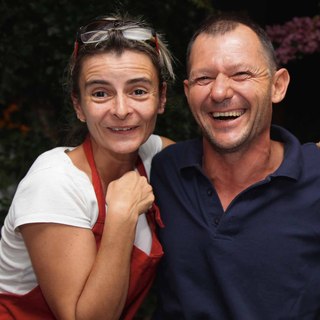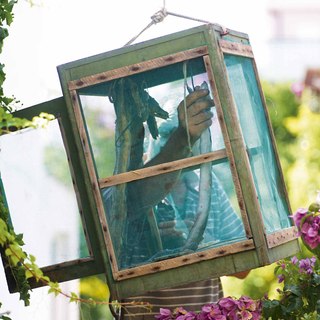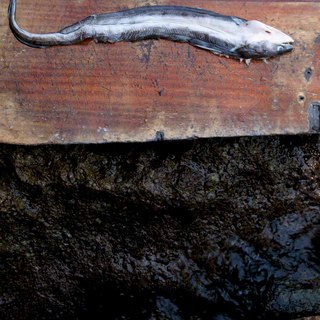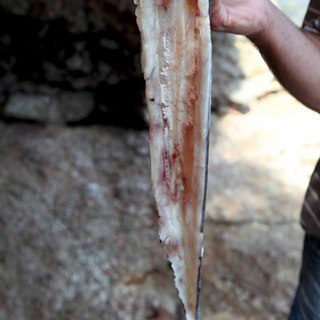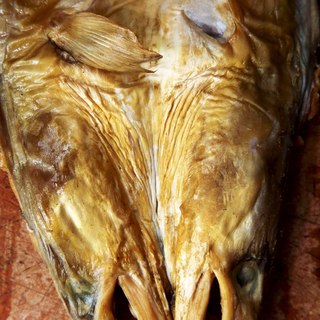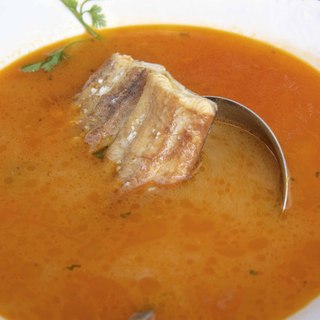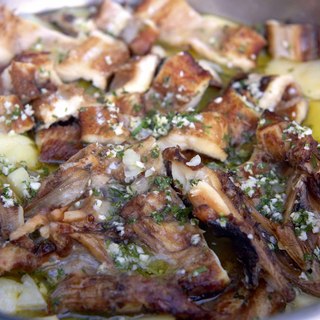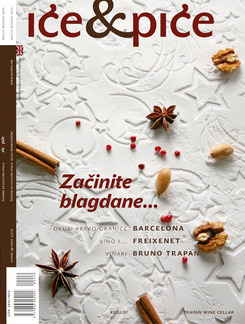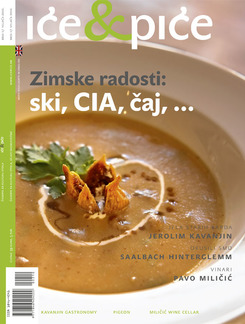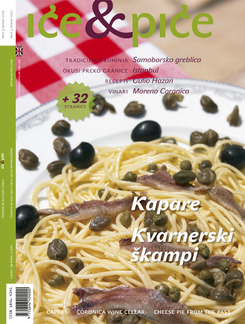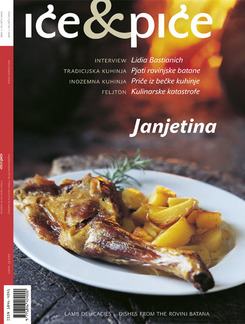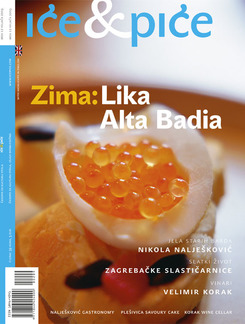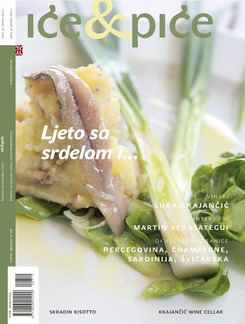When they’re on board, the fishermen are bold in averring this well-known saying, but on return to harbour they’re considerably quieter. That’s how it is in Zavala on the southern side of Hvar.
Nati, or Natalie Ann, is a real island woman. Born on an island, today she lives on an island. The island she was born on is a bit bigger (Australia), now it’s Hvar. At the age of three and a half she came back with her parents. On her father’s side she’s from Hvar, on her mother’s, from Vis. Never mind that I grew up in Split and I love Split, I’m a pure-blooded islander. I came to Zavala 16 years ago, and love it. I like cooking and my kitchen is my laboratory.
Secrets of Nati’s lab
All the versions of dried conger are history. The pre-fridge age. All the fish were dried – conger eel, mullet, forkbeard, cod... anything caught was also dried. In fact, whatever couldn’t be eaten would be dried.
Salted – cured. A simple way of making sure fish doesn’t go off. Today it’s easy. Into the fridge with it! Before, there were no fridges, there was nothing. When they caught a lot of lobster, some of it was thrown back alive because they couldn’t eat them. Octopus would be dried, for it was caught in bags full and was hard to sell fresh. Before it was worth nothing. Now fresh octopus is much prized, but there isn’t any, it’s been fished out.
Conger is mostly fished on trawl lines, sometimes in traps. Preparation for curing consists of cutting it down the dorsal fin, extracting the bone. If the bone is not taken out, it’ll sometimes acquire a smell when drying. The bone goes off for broth, or you chuck it. Pound coarse salt and garlic in a mortar and rub it well into the fish. Weight it with a heavy stone and leave for 12 hours to let the water come out. After that, wash in the sea to get rid of the salt. Then it is air-dried for 2 to 3 days, smoked for 1–2. It’s ready for cooking then. We dry it in a mesh frame, to keep the flies off.
Conger can be fried too in steaks. If it is a big one, that’s excellent. It’s best poached, but has to be alive. Fresh from the sea and straight into the pot. Just olive oil. The gravy from a fresh one is great.
Conger doesn’t sell well, though it depends on the place. There are some people who will buy it at once, and others who don’t give a toss. Same with forkbeard. Forkbeard, I know – some people call it the conger’s mother – in Jelsa at the fish market, some will go for it at once, others won’t even look at it. Same with billfish, every village and every island have their particular likes.
It’s winter. Zavalja people are waiting the awakening, waiting summer. But Nati’s lab is at work. Winter and summer. With seafood delicacies, of which there are every day fewer in the sea.
